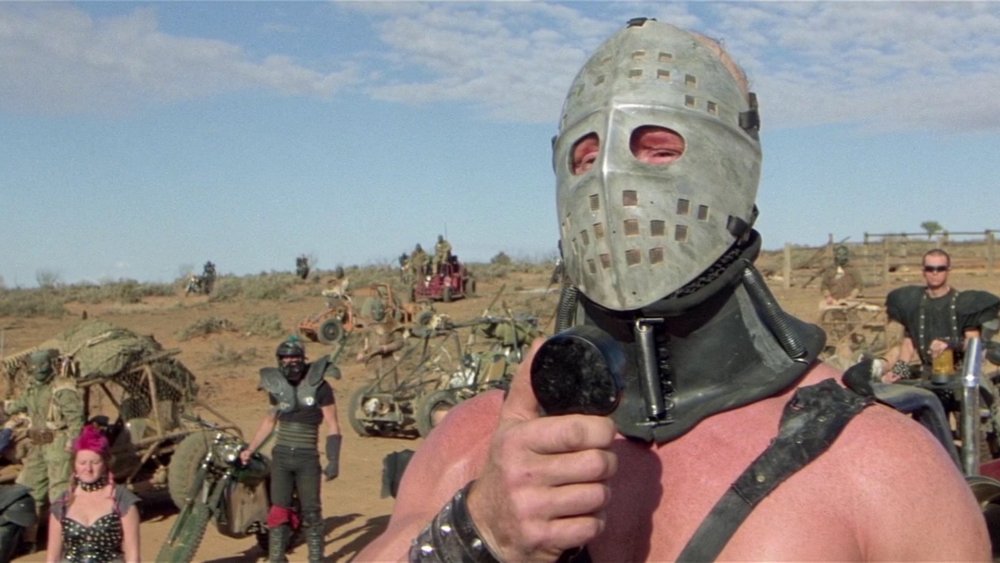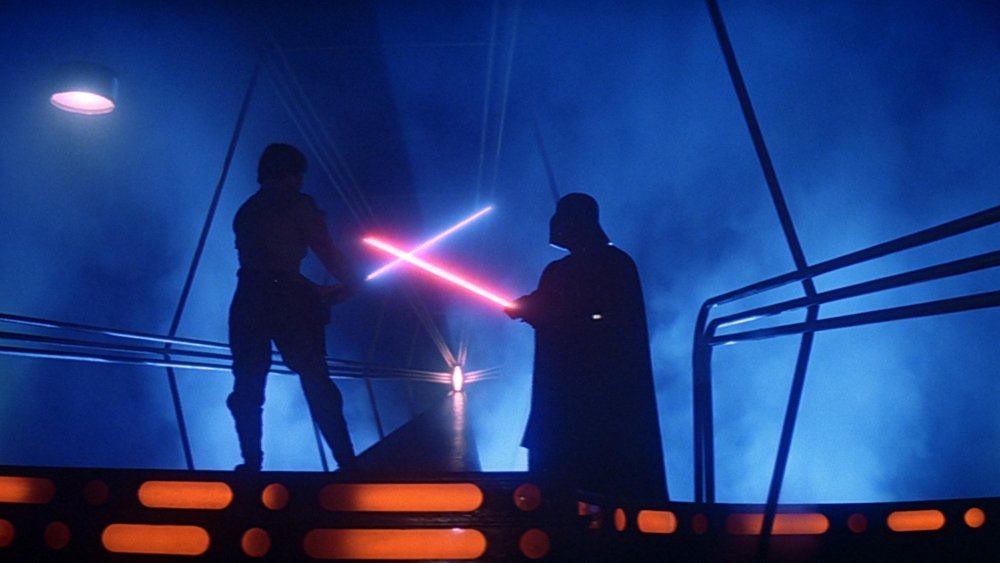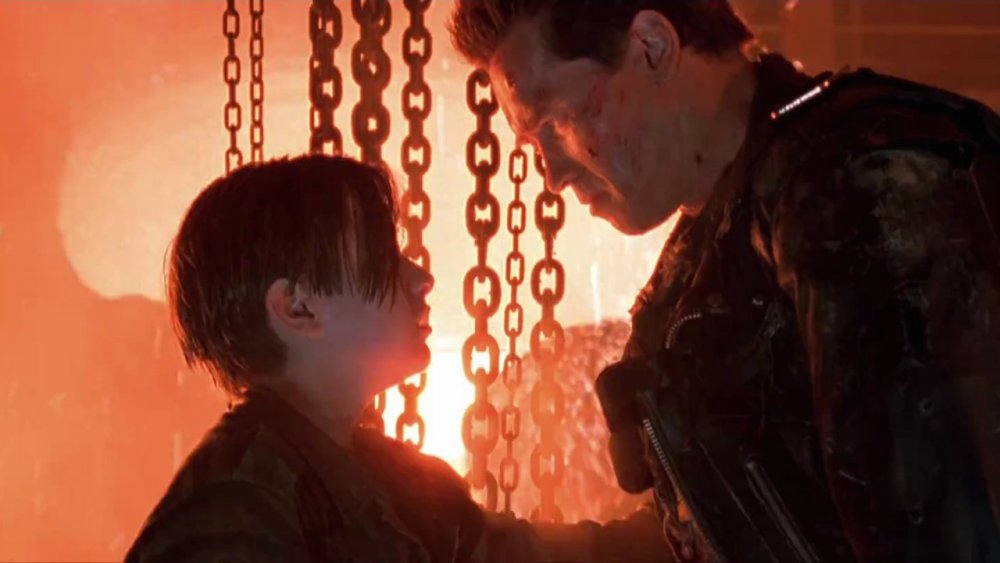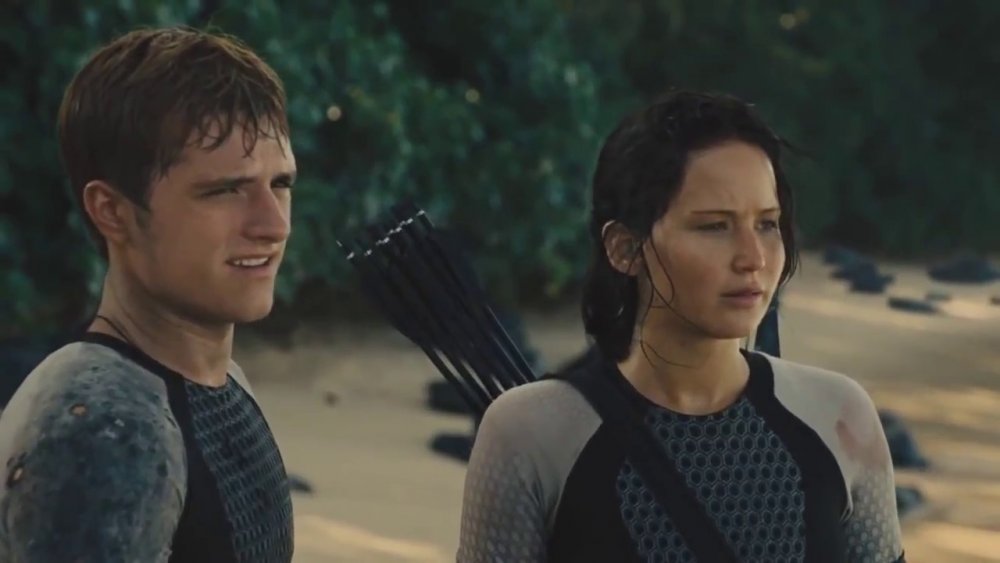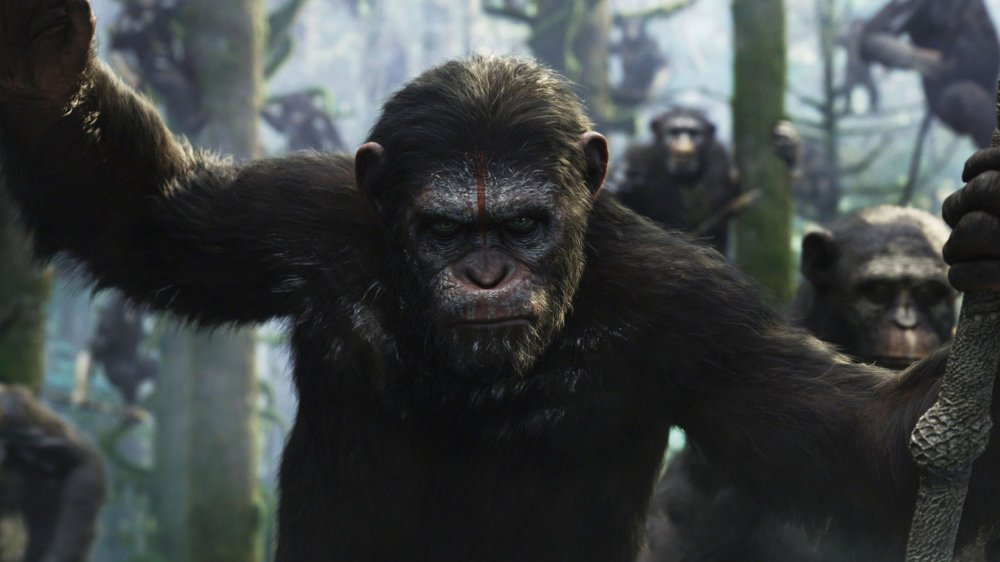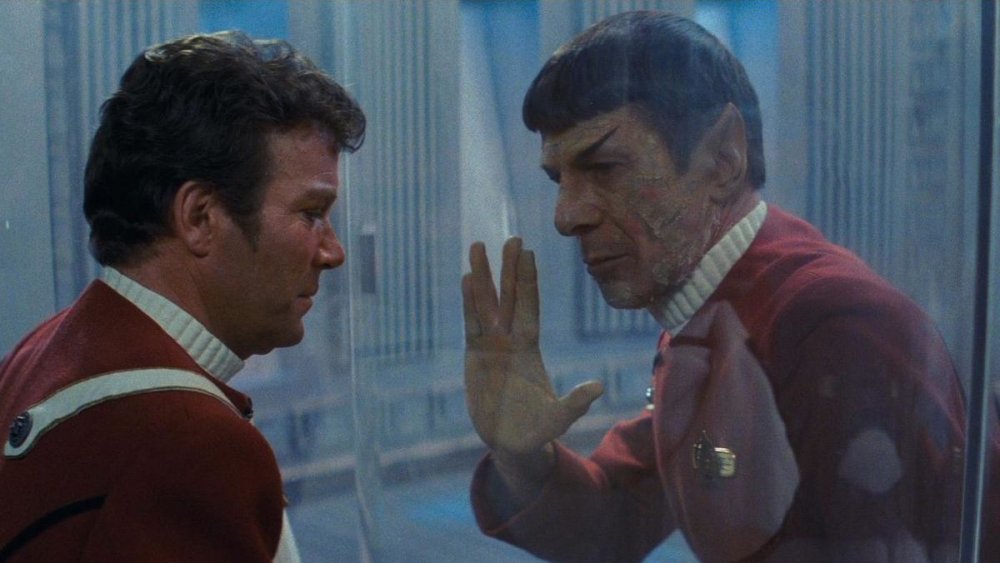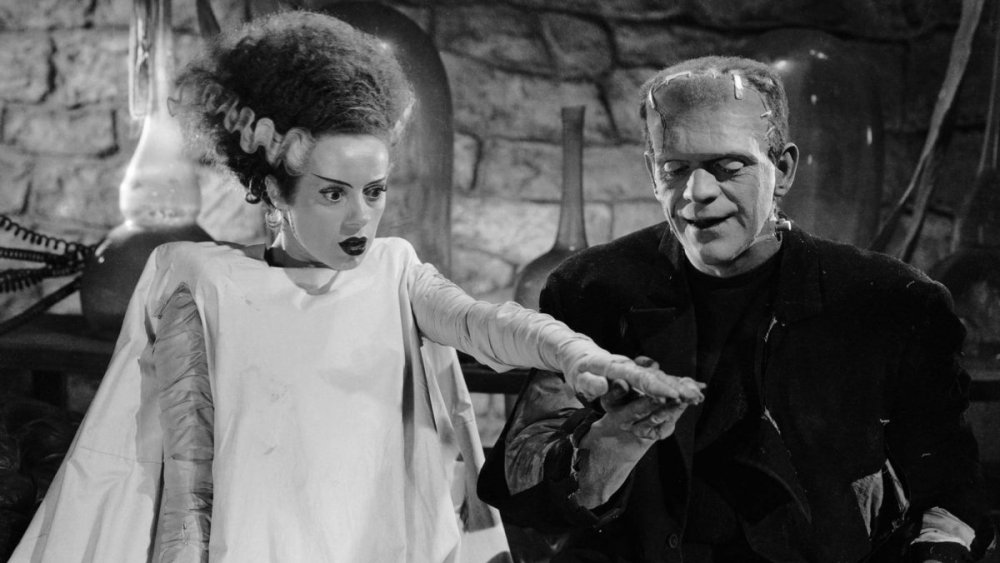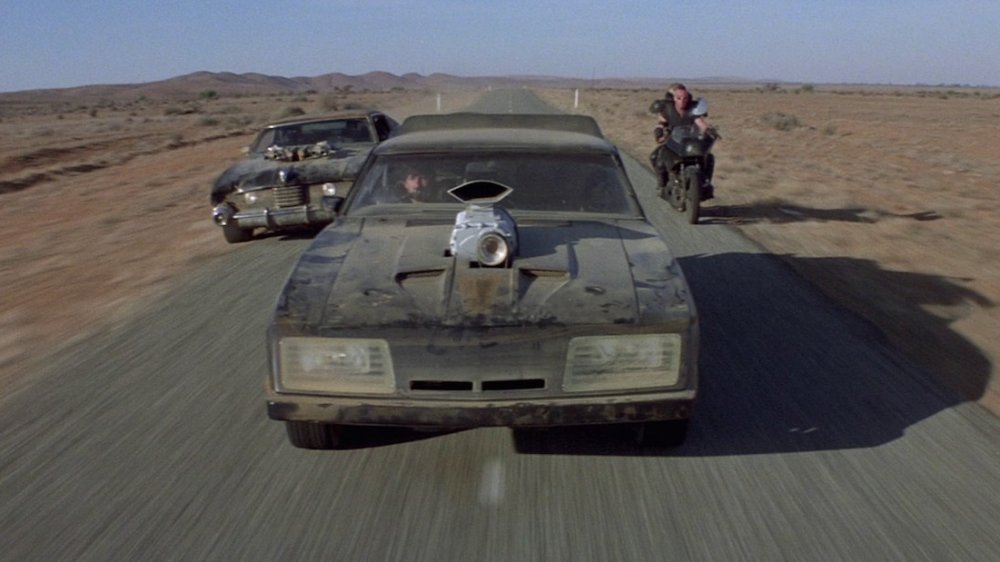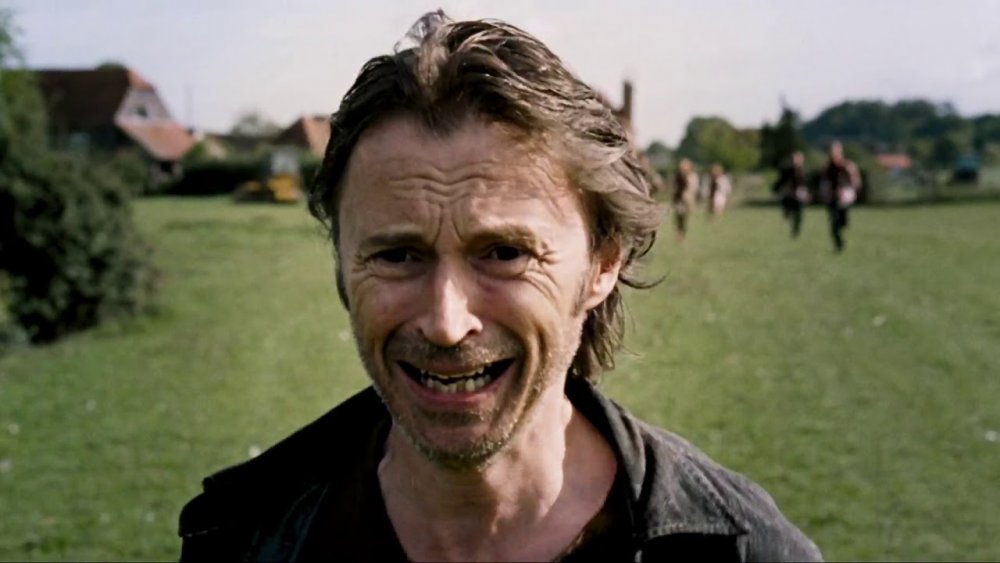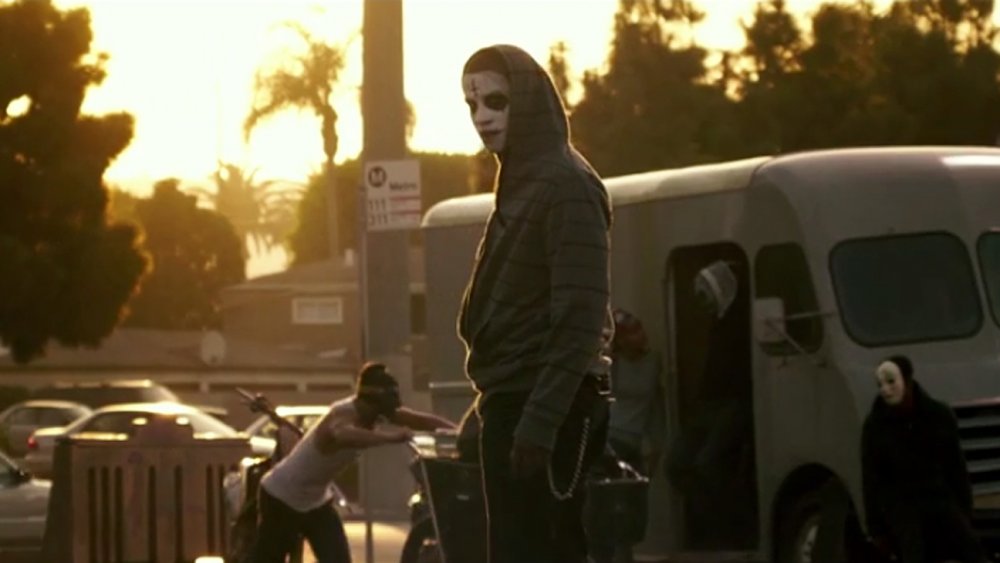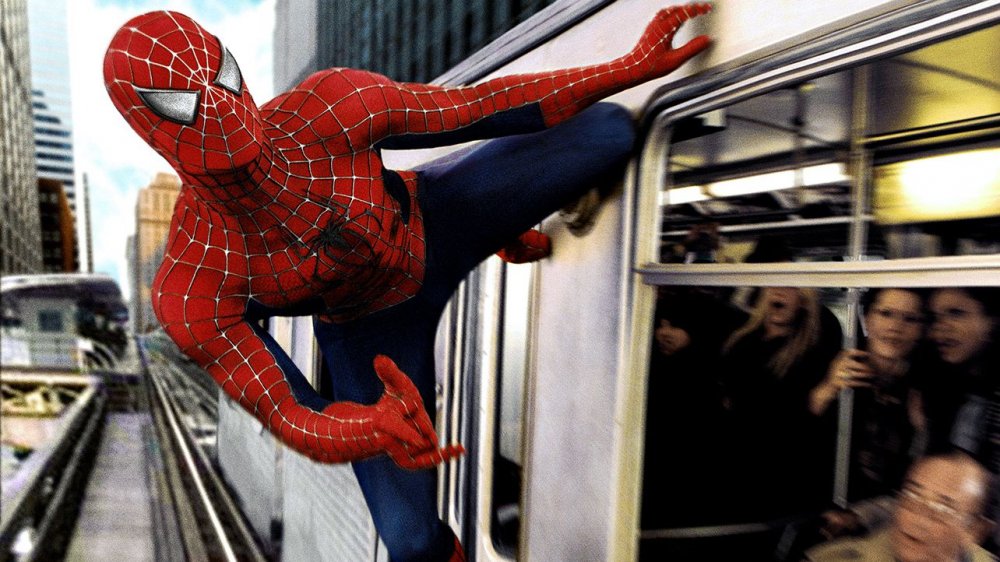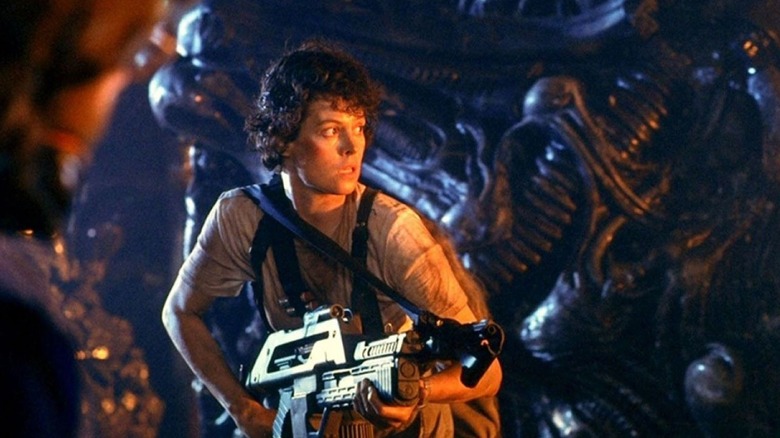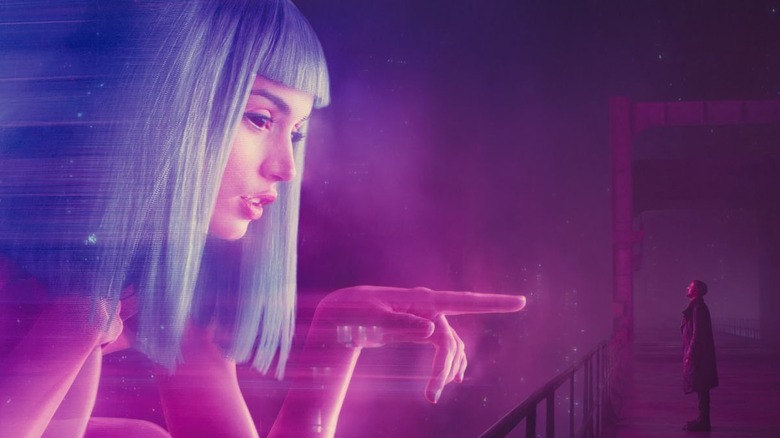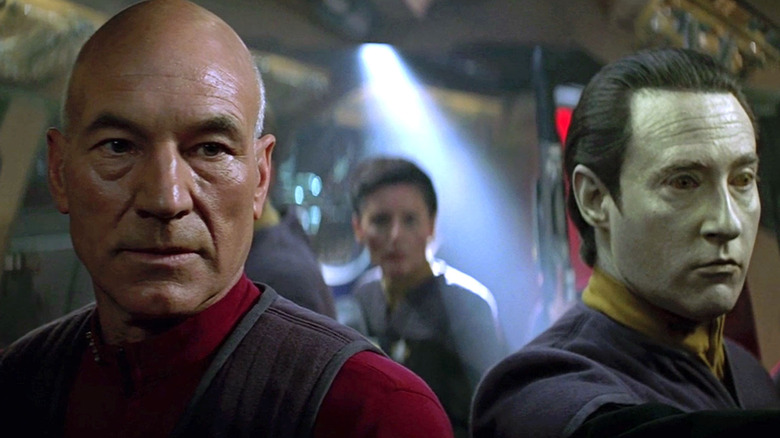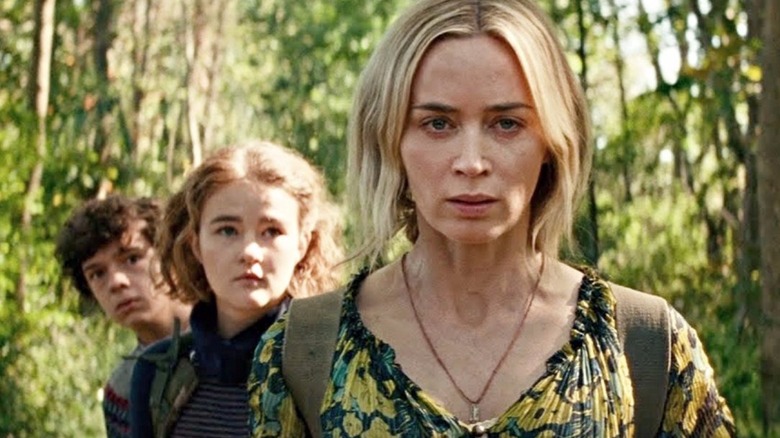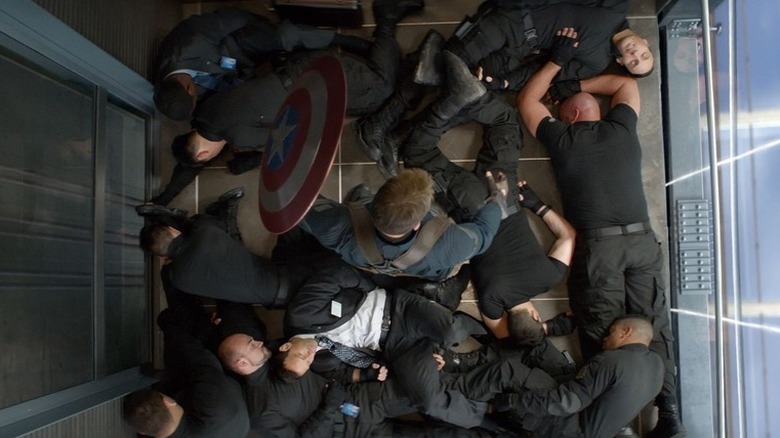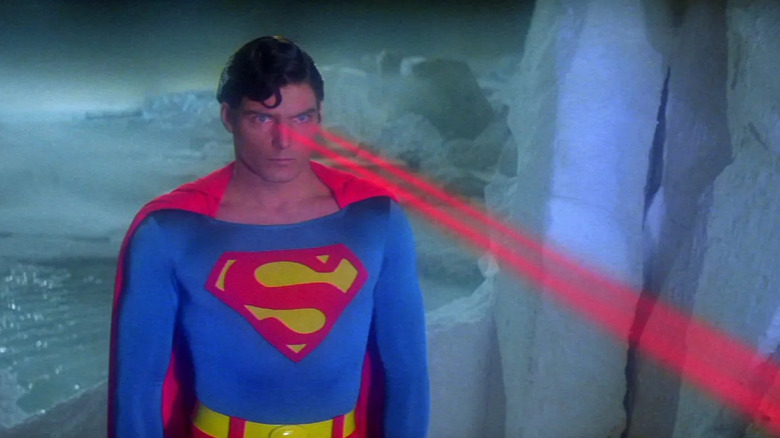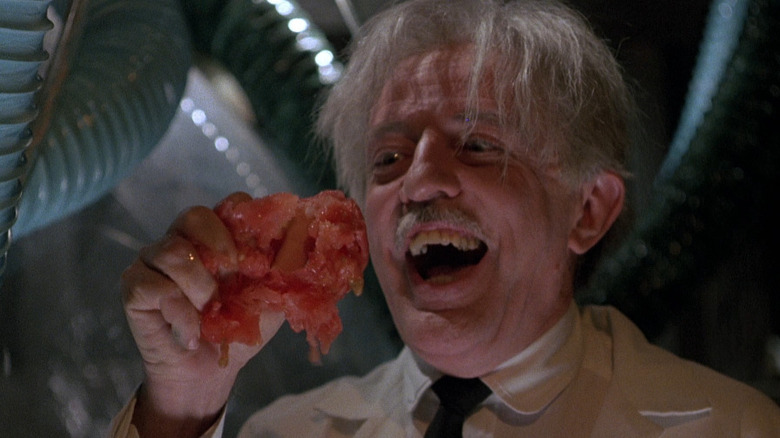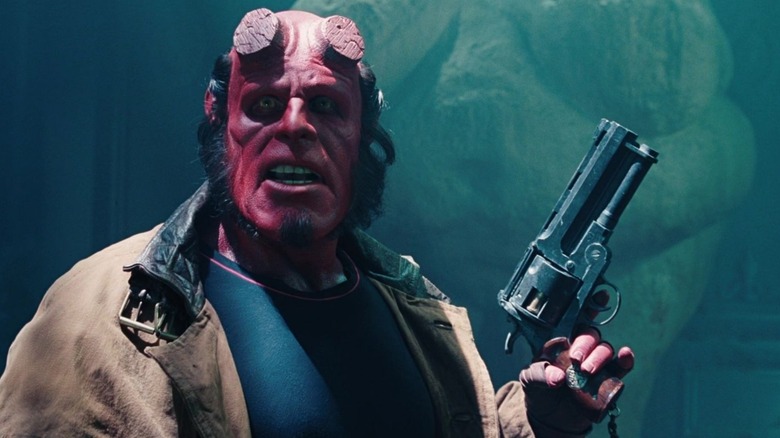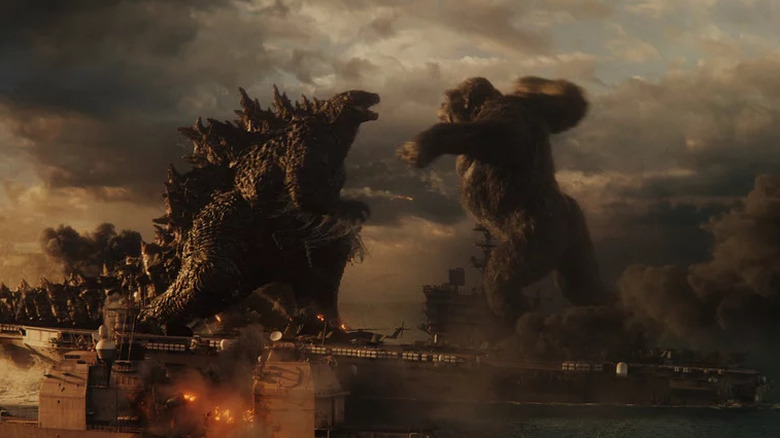Sci-Fi Sequels Better Than The Original
It's a difficult challenge to create a sequel. In many cases, audiences have fond memories of the first film, and you have to build upon the pre-established story in a way that feels fresh. There's a far more difficult challenge when the first film wasn't so beloved, but made a good deal of money. In that instance, a sequel needs to let audiences know that there are still worthwhile stories to tell in that universe.
Expanding universes is particularly important when you deal with science fiction. A new technology or species or aliens provides an abundance of unique stories, which is why it's disappointing when so many sci-fi sequels do the bare minimum in continuing a franchise.
And yet, there are those sequels that surpass expectations — the follow-ups where someone takes a concept from the original film and just goes to town on it. From finding a new take on the first film's themes to fleshing out the characters even more, these movies did more than just make money for a studio. They are true works of art that stand up on their own as great pieces of cinema — and they're all sci-fi sequels better than the original.
The Empire Strikes Back created iconic moments
1977's "Star Wars" changed the cinematic landscape forever. Not only did it revolutionize sound design and new camera technology, but it told a gripping story that borrowed heavily from Joseph Campbell's Hero's Journey. From that moment on, characters like Luke Skywalker and Chewbacca were household names that anyone would recognize. It wasn't a film that people would only come to appreciate years later, it was a global phenomenon that re-envisioned what you could do with a movie. A sequel was all but guaranteed, but how do you possibly follow up a hit this big?
"Star Wars: Episode V – The Empire Strikes Back" is regarded by many as the best "Star Wars" film ever. The original remains a classic no matter what, but with the sequel, you can really feel the people behind the scenes aiming to expand this universe and challenge its characters. It doesn't merely retread the same ground as the original. It forges its own path.
Add on top of that one iconic line after the next, including "I know" and "No, I am your father," and you have a recipe for a movie that shocks and delights fans the first time they see it. "A New Hope" was a hit, but "The Empire Strikes Back" cemented the franchise's legacy forever.
Terminator 2: Judgment Day flipped the script
1984's "The Terminator" is an incredible science fiction/action film that broke new ground, both in terms of storytelling and visual effects. Arnold Schwarzenegger plays the titular mechanical assassin who's sent back in time to kill Sarah Connor because she will eventually give birth to humanity's savior. It's a formula the franchise has been trying to recreate ever since through numerous sequels with varying degrees of success. But there's really only been one sequel that has matched, and by some accounts exceeded, the original.
Seven years later, James Cameron returned to the director's chair to give us "Terminator 2: Judgment Day." The film flipped the script in several ways, but in each instance, it feels like a natural progression to this story. This time, Schwarzenegger's Terminator is a good guy trying to protect Sarah Connor. Plus, Sarah is more of a full-blown action hero in this film.
The sequel also broke new ground for visual effects. The T-1000, a new cyborg assassin made out of a kind of fluid metal, still looks great to this day. During a day and age when technology is more prevalent than ever, "T2" still feels incredibly relevant.
The Hunger Games: Catching Fire expanded the world of Panem
"The Hunger Games" series of books became a global phenomenon within the young adult genre. It was only a matter of time before the books were adapted to the big screen, and the result was one of the more acclaimed young adult projects of its era, set in a post-apocalyptic, dystopian future where tributes from 12 different districts are selected to fight to the death in an annual tournament known as the Hunger Games.
The first film is a kinetic ball of energy as you're put in the shoes of Katniss Everdeen trying to stay alive. However, the sequel "Catching Fire" is a far more intriguing film. It has the same level of action as the first movie as Katniss and her friend Peeta are once again transported into the games. However, the sequel has far more interesting ideas than its predecessor.
"Catching Fire" explores themes, such as the struggle for control amongst the powerful, that are only hinted at in the first film. Before we head back into the arena, we see the political revolution Katniss has jumpstarted. We also get the sense of what her role will be within the changing landscape of Panem. The first movie set the stage so the sequel could burn it all down and provide a different kind of YA story.
Dawn of the Planet of the Apes gave the franchise new gravitas
The "Planet of the Apes" franchise is tricky to nail down. The films' quality varies significantly over the years, especially within the original series, which ran from 1968 to 1973 over five films. Tim Burton's remake of the original in 2001 failed to reignite any real interest in the series. It wouldn't be for another decade, and "Rise of the Planet of the Apes," that audiences would really see what kind of stories this franchise would tell.
While "Rise" is great in many aspects, its purpose is essentially to show how apes came to gain intelligence and begin their conquest of the planet Earth. It's not until the sequel, "Dawn of the Planet of the Apes," that we really see why these movies deserve to be made. The story of an impending war between the apes and a small faction of humans, as well as their attempts to try to avoid conflict, is spectacular and heartbreaking. After all, you go in knowing war is inevitable.
But beyond that, the visual effects are outstanding. Andy Serkis brings a great deal of sadness to Caesar, making him one of the most emotionally compelling VFX-created characters in film history. Plus, "Caesar... weak. Koba... weaker" is possibly one of the most awesome action movie lines of all time.
Star Trek II: The Wrath of Khan
"Star Trek" was a groundbreaking science-fiction television series. It was only a matter of time before the show made the leap to the big screen, and that happened in 1979 with "Star Trek: The Motion Picture." While the movie isn't without its charms, it failed to really earn critical acclaim.
That all changed with arguably the best "Star Trek" movie ever made, "The Wrath of Khan." The biggest improvement between the two films is the villain. The first movie features a forgettable cloud as the antagonist, but Khan is one of the all-time great movie bad guys. Although he tortures our heroes, he has sympathetic motivations, and you understand where he's coming from at all times.
The film works because they found a way to take the best parts of the original television series and make them work within the context of a feature-length film. There's a reason Khan was chosen to return in the Kelvin timeline series of "Star Trek" films.
Bride of Frankenstein humanized a monster
Mary Shelley's novel "Frankenstein; or, The Modern Prometheus" is considered by many to be the first prime example of science fiction. In 1931, the story's monster, played perfectly by Boris Karloff, received his own film as part of the Universal monster series. The film follows closely to the source material with a few deviations here and there, forging a film that defined Frankenstein's monster for generations.
With the sequel, "Bride of Frankenstein," the filmmakers had a chance to forge their own path by following a subplot from the original source material where the monster wants a partner. In the film, Frankenstein obliges and creates the Bride of Frankenstein. It's a philosophically rich story that argues there's a great difference between creating life and creating humanity.
With such a potent horror film that still stands up to this day, it makes sense that a reboot has been tried more than once over the years. But if we never get a remake, we still have the original to show us that even monsters want love.
Mad Max: The Road Warrior made the apocalypse fun
"Mad Max" is an excellent action thriller. Set against the backdrop of an apocalyptic landscape, the film follows Max as he becomes part of a bitter feud with a bloodthirsty motorcycle gang. Two years after "Mad Max" came out, Miller dropped the mic again with the superb follow-up "The Road Warrior." The movie has everything you want in an action sequel: The action is bigger, the cars are louder, and the world is more thoroughly explored, proving you can tell an infinite number of stories with Max as he wanders through this hellscape helping people in need.
It set the template for what audiences would come to expect out of the "Mad Max" sequels. Hopefully, we'll see more of Max after the raging success of "Fury Road," but even if we don't, at least we have "The Road Warrior" to look back fondly on.
28 Weeks Later provided visceral horror
By the early 2000s, the zombie genre had kind of worn out its welcome; it seemed as though filmmakers had already told every story you could possibly tell with these monsters. That all changed with 2002's "28 Days Later," which reinvigorated a stagnant genre. The horror is on point, and the characters feel real. It also made the idea of fast-moving zombies more mainstream.
"28 Days Later" is already a fairly dark story, so it's pretty incredible that the sequel, "28 Weeks Later," managed to be even grimmer. Depraved depths of humanity are reached as characters question whether someone is infected by the virus, and one by one, people are picked off in spectacularly bloody fashion.
"28 Weeks Later" also has a spectacular cast of actors who would go on to amazing things, such as Rose Byrne, Jeremy Renner, Idris Elba, and Imogen Poots. Director Danny Boyle has suggested there could be one more film to round out the trilogy, appropriately titled "28 Months Later." If that ever comes to pass, you can be certain it will be one of the darkest zombie movies ever made.
The Purge: Anarchy further explored politics
The premise of "The Purge" is intriguing. For one 12-hour period every year, all crime is legal, including murder. There were a ton of interesting ideas the film could have explored in great depth, such as the political landscape that would have led to such a world and what it says about human nature that people would agree to kill one another for a single night annually. While "The Purge" functions as a perfectly satisfying home invasion thriller, it doesn't really explore the universe, in part because most of the action is confined to a single house.
"The Purge: Anarchy" is a marked improvement over the first film. Now the action is on the streets as we see a greater disparity in how the poor versus the wealthy view the Purge. Since now we're on the streets, the action is also ramped up to 11. The set pieces are greater and more engaging. Honestly, it's the kind of film "The Purge" should have been in the first place. Subsequent sequels, as well as the "Purge" television series, have gone on to replicate the formula of "Anarchy."
Spider-Man 2 is a perfect superhero movie
There were superhero movies before 2002's "Spider-Man," but this particular film really captured the general public's attention. People who weren't ordinarily comic book fans came out in droves to see it, and flaws aside, it's a pretty great adaptation of the comic books. It's bright, colorful, and features quippy dialogue. But once the origin story was out of the way, the filmmakers could finally delve into what truly makes Spider-Man a hero.
There are plenty of superhero sequels that top the original (i.e. "The Dark Knight" and "Thor: Ragnarok"), but there's just something special about "Spider-Man 2." It features one of the best superhero movie villains of all time with Alfred Molina's Doc Ock. Just as much attention goes toward Peter Parker's everyman struggles — we see him try to juggle all of his responsibilities, from paying rent and keeping a job to maintaining some kind of relationship with Mary Jane. He's flawed and human, which has always made Spider-Man one of the most relatable superheroes ever created.
Plus, the train scene remains one of the all-time great action set pieces in any film. "Spider-Man 2" showed what a superhero movie could do, and few since have reached such heights.
Aliens took sci-fi horror in an explosive new direction
In what may be one of the most controversial picks on our list, we're going to go out on a limb and make a case for "Aliens," the 1986 sequel to Ridley Scott's watershed 1979 "Alien," as better than the original. While comparing these two genre greats is a game of inches, and solid arguments can be made for either film being the better of the pair, we still think "Aliens" manages to come out on top. It was certainly in capable hands, with none other than James Cameron at the helm in only his third directorial outing. He tapped into some early mastery of the action film to deliver a sequel that was totally different than "Alien," and traded the slow burn tension for no holds barred action, all while retaining the suspense and grit the series was known for.
It's not just us who's willing to stand behind this hot take either, with critics like Gerardo Valero of RogerEbert.com sharing the sentiment. In his 2020 comparison of the two films, Valero wrote, "What truly makes "Aliens" even better than its predecessor is how it maintains a seemingly impossible fever pitch. You sit there in awe watching the film, realizing the great expectations that every sequence creates are invariably surpassed, and as much as you assure yourself that the following scene can't possibly top the last, you are still astonished when it invariably does."
Blade Runner 2049 lived up to its legacy
After stunning and terrifying audiences with just his second directorial outing in 1979's "Alien," director Ridley Scott would further prove himself to be a master of his craft with the release of 1982's "Blade Runner." The now iconic title has become synonymous with the cyberpunk subgenre and remains a favorite of audiences some 40 years on, following Rick Deckard (Harrison Ford) as he hunts down humanoid replicants in the "near future" of 2019.
35 years later, director Denis Villeneuve took audiences back to the world of "Blade Runner" with "Blade Runner 2049." This time around, we follow LAPD officer K (Ryan Gosling) as he works to track down rogue replicants, all while becoming embroiled in a much deeper conspiracy regarding their biology. His search for the truth fully exposes us to the grim future setting, and even sees Ford return to the role of Deckard as part of the dystopian drama.
With the enduring legacy of the original film in mind, it's a tough call to make when asked which of the two comes out on top. That said, "Blade Runner 2049" not only further explores the universe its predecessor crafted, but expands on it in ways few audiences would have expected. Add in all of the breathtaking visuals, incredible performances, and a truly striking score that matches its gloomy tone, and you've got the makings for the rare sequel that outclasses its inspiration.
Star Trek: First Contact course corrected after Generations
After seemingly closing off the saga of the original series cast on a high note with "Star Trek VI: The Undiscovered Country," the sci-fi world of "Star Trek" once again returned to the big screen. This time around, though, they'd have an entirely new crew. Well, not really, as bridging the gap between the two series was "Star Trek: Generations," a film with an unmatched number of talented actors and potential that ultimately failed to deliver. A few years later "Star Trek: First Contact" would follow, hoping to finally get the crew of "The Next Generation" onto proper film footing.
Riker himself, Jonathan Frakes, was in the director's chair for the follow-up, and ready to give audiences a Trek film worth watching. Set amidst a fresh assault by the Federation's longtime adversary the Borg, Enterprise captain Jean-Luc Picard (Patrick Stewart) must lead his crew while facing off against his own storied past with the cybernetic hivemind. Unlike their last encounter, however, this time the Borg have added an entirely new weapon to their arsenal: time itself.
Grand enough in scale to be fittingly cinematic while also retaining the intelligent nature of the classic television series, this was Trek in movie form done right. While it certainly doesn't reach any of the truly great moments in "Star Trek" that we got in films like "The Wrath of Khan," it comes pretty close, and winds up not only being leagues above "Generations," but the standout entry among all four of the "Next Generation" films.
A Quiet Place Part II expanded its terrifying world
Hitting theaters in the summer of 2018 and immediately making waves among horror enthusiasts, "A Quiet Place" was one of the best horror films to emerge from the 2010s. Set in a world where humanity has been besieged by alien invaders who hunt by sound instead of sight, those few who have managed to survive the initial onslaught are left struggling to survive in total silence. On a rural farm in New York State, The Abbott family, Evelyn (Emily Blunt), Lee (the film's director John Krasinski), and their children have managed to carve out a life for themselves and adapt to the hostile world. Their chances of survival are called into question, however, as a careless mistake reveals their presence to the extraterrestrial hunters.
Grossing well over $300 million against its modest budget of just $17 million, "A Quiet Place" was practically guaranteed to get a sequel, and two years later we got just that. Incredibly, not only does it match the downright dread that blanketed the first entry, but actually manages to top the first film in many ways. Leaving the family farm behind and now equipped with the tools to fight back, the remaining members of the Abbott family explore the remnants of civilization, hoping to unite with other survivors.
The expanded worldbuilding adds a new level of depth to the dystopian setting that we didn't get in "A Quiet Place," making it an even more interesting entry that knows how to shake things up. Plus, the first ten minutes alone make it clear we're in for a phenomenal film, depicting the earliest moments of the aliens' assault on planet Earth and the hellish chaos that ensued.
Captain America: The Winter Soldier brought Steve Rogers to his full potential
Though the first "Captain America" movie way back in 2011 did a solid job introducing the first Avenger to the growing Marvel Cinematic Universe, by the time "The Winter Soldier" rolled around a few years later, they had figured out how to use Cap to his fullest potential. Decades after his World War II encounter with the Red Skull in a world grappling with the fallout of the alien invasion seen in "The Avengers," Steve Rogers must go face to face with a full-blown conspiracy emerging from within S.H.I.E.L.D. Meanwhile, he faces a struggle from within trying to find his place in an increasingly complex time without the clear-cut battles of yesterday.
The first film in the MCU to be directed by the Russo Brothers, "Captain America: The Winter Soldier" remains a clear winner over Cap's first film. A stronger supporting cast all have their time to shine, including Samuel L. Jackson, Scarlett Johansson, and Sebastian Stan, and some of the most thrilling action scenes in the entire series call the sequel home. A clear highlight of Marvel's Phase 2, there's a reason why it still ranks among the top ten MCU movies nearly a decade later.
Superman II's Donner Cut was a long-lost treasure
When comparing the theatrical releases, 1978's "Superman" is not only hands-down the greatest of the adaptations to star Christopher Reeves, but probably still the best superhero flick to date featuring the Man of Steel. When the conversation shifts to talking about the 2006 "Donner Cut" of the sequel, however, it gets a lot more interesting.
Originally tasked with helming both "Superman" and "Superman II", director Richard Donner wound up being removed from the development of the second film after he had already completed the lion's share of it. Significant reshoots and story changes would wildly change his original vision, leading to critical and commercial success in 1980, but leaving the original cut of the film in limbo, seemingly forever. Thankfully, that all changed in 2006, when the long awaited so-called "Donner Cut" was patched together finally saw the light of day on home video.
A more serious tone, omitted performances from talent like Marlon Brando and John Williams, and a more cohesive story all returned, and gave audiences a taste of what could have been. Though it might not be quite as good as a truly perfect superhero sequel like "Spider-Man 2", We think "Superman II" comes pretty darn close.
Return of the Killer Tomatoes juiced up the camp
Hey, not all of the films we're talking about here are award winners. Released as a spoof of the comically absurd monster movies of the era, 1978's "Attack of the Killer Tomatoes" predictably saw hordes of bloodthirsty tomatoes reverse the roles on all of humanity. Comically terrible by design, the movie proved successful enough at the box office to subject audiences to a whole slew of follow-up films, with "Return of the Killer Tomatoes" landing a decade later in 1988.
Still reeling from the events of the first film, humanity is once again terrorized by a second wave of the sentient nightshades thanks to the vision of another deranged scientist. This time around, though, some serious talent joined the cast, with a young George Clooney in a lead role and longtime comedy and character actor John Astin as the evil scientist Mortimer Gangreen. Thanks to a bigger budget and a more capable cast, "Return of the Killer Tomatoes" outclasses any of the titles in the series before or after.
If you're looking for a truly great sci-fi outing, it might be best to delve into some of the other films we've covered. But if what you're in the mood for is a spoof film that's as outrageous as it is schlocky, it's hard to do better than "Return of the Killer Tomatoes".
Hellboy II: The Golden Army unleashed Guillermo del Toro
Known for projects that incorporate fairy tale themes with a grim twist, Guillermo del Toro was the perfect choice to direct "Hellboy," the first film adaptation of the adventure-horror-fantasy comic series created by Mike Mignola. Still an unproven director for U.S. audiences in 2004, it was perhaps thanks to the critical and commercial success of what remains his magnum opus "Pan's Labyrinth" in 2006 that Del Toro was free to get as creative as he wanted when the time came for the "Hellboy" sequel, "Hellboy II: The Golden Army."
Set in the wake of Hellboy's battle with a demonic Rasputin in the 2004 film, the second entry sees Hellboy and the rest of the Bureau for Paranormal Research and Defense go toe to toe with a prince of another realm determined to unseat humanity's control of the planet. In doing so, they must track down a fabled Golden Army of unstoppable warriors, while fighting off everything from swarms of flesh-eating tooth fairies to giant trolls.
With the studio now confident in leaving Del Toro to his own devices, "Hellboy II: The Golden Army" surpasses the original thanks to being a truly unfiltered version of the fantasy director's vision, as well as a more faithful adaptation of Mignola's original comics.
Godzilla vs. Kong delivered on its monster promises
Bar some of the films in our lineup (looking at you "Killer Tomatoes"), the majority of the films we've discussed are some of the best in the sci-fi genre, with a few even tiptoeing into what some might call true art. While the same can't exactly be said for any of the entries in the recent "Kong" or "Godzilla" series, as far as the genre of giant monster flicks goes, they aren't half bad. 2014's "Godzilla" was a return to form for the classic kaiju in a way that Roland Emmerich's "Godzilla" failed to achieve, and "Kong: Skull Island" similarly delivered on all the thrills and monster mayhem you could hope for. By spring of 2021, it was finally time for the crossover we'd all been waiting for.
This is the part where you'd expect us to talk about how tight the writing in "Godzilla vs. Kong" is, or how convincing the cast's performances are, but let's be honest — we all saw this one just to watch Kong and Godzilla duke it out, and the film goes above and beyond providing that. Well choreographed fighting, great setpieces, and an indulgent amount of destruction all work hand-in-hand to make the monster matchup the best in each titan's respective film lineup. And as if that wasn't enough, the return of Mechagodzilla alone should be all the proof you need of this entry being the true king of the MonsterVerse so far.
